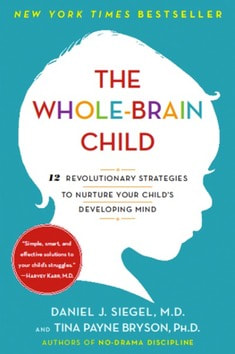|
Tantrums, meltdowns and irrational behaviour can all come from a child (and in a relatively short space of time) What triggers this? How can I use these moments to help the student to develop or understand? The Whole Brain Child is an easy to read book that gives the reader greater understanding of what the student is dealing with on the inside, how to connect with them and provides practical strategies to turn tantrums, meltdowns or irrational behaviour into a teachable moment.
The book provides great insight into the workings of the brain, without feeling like a scientific text book. In the opening chapter on integration; Siegel and Bryson use the analogy of the body consisting of many organs that work together to remain healthy, with the brain consisting of many components that work best when working together. An example of this; with the brain split in two halves the left (logical, linguistic and literal) and the right side (emotional, non verbal and experiential). When integrated we are able to achieve more intricate and sophisticated tasks. Problems arise when the left and right side of the brain are not integrated and working together. There are times that students (or teachers and parents) can allow their left side to dominate; not connecting with the other person emotionally and just dealing with them using only logic. Just as there are times when we allow emotions to take over, divorcing logic from our decisions and feelings. Siegel and Bryson help you to identify when this happens and provide simple and practical examples of how to integrate (or re-integrate) the two halves of the brain. Throughout The Whole Brain Child there are comic strips and real life and relatable examples. The clenched fist example (Brain Model) on page 62 provided a visual and practical example that will help students to identify their emotions, understand why they're feeling a certain way; helping them to calm their feelings. I would recommend The Whole Brain Child for anyone who regularly interacts with children, though as an adult it has helped me to reflect on how I deal with my emotions and the impacts that this has on my decisions and the people around me. It is an easy to read and practical resource; that shows us the most difficult situations can provide us with the greatest teachable moments, that enables a child to identify their feelings and empowers them to respond to them in a positive way enabling them to lead happier, healthier lives.
1 Comment
|
